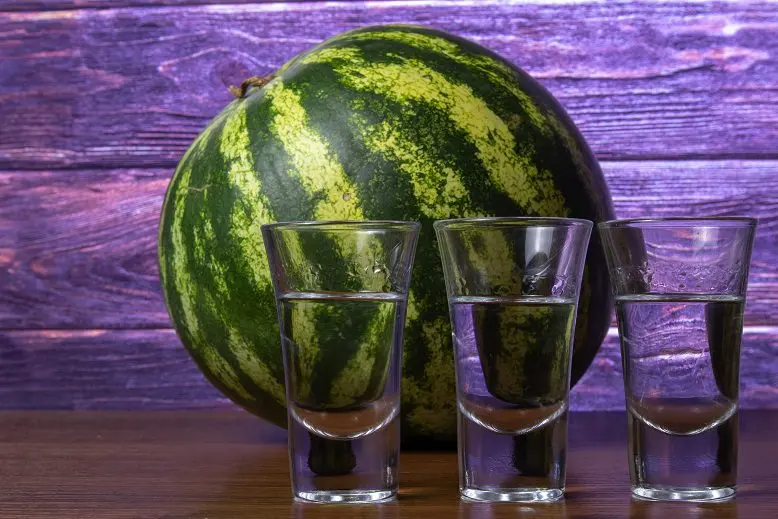Despite the high sugar content, watermelons are considered poor raw materials for home brewing. In fact, this is not so, but this berry needs an individual approach. If you just crush the fruits and ferment, the distillate will turn out to be bitter-sour with an unpleasant odor. Next, we will consider the correct technology for making watermelon mash, followed by double distillation.
Ripe, overripe and even slightly sour watermelons, which are not suitable for eating, can be used for moonshine. The main thing is that the pulp is not rotten or moldy. Damaged parts must be cut out.
Ingredients:
- watermelon juice – 30 liters;
- sugar – 1-3 kg (preferably);
- dry yeast – 50 grams (or 300 grams pressed).
By themselves, watermelons contain a lot of liquid, so we can do without water, the addition of which will only interfere. In 1 kg of fruit is 50-100 grams of sugar. This means that to obtain 1 liter of watermelon moonshine with a strength of 40 degrees, you need at least 10-12 kg of raw materials. I advise you to increase the yield by adding 1 kg of sugar (an additional 1,1-1,2 liters of distillate) per 10 liters of juice. This promotes fermentation and does not spoil the quality.
Attention! Watermelon pulp is sterile and contains no wild yeast. For normal fermentation, I advise you to add dry, fresh pressed or alcoholic yeast to the mash, otherwise the wort will turn sour. In extreme cases, fans of organic moonshine without yeast can make a starter from berries or raisins, but fermentation will last several times longer.
Recipe for watermelon mash
1. Cut the fruits into two even parts. Gently scoop out the pulp without white parts and peel with a spoon into a large container, without splashing the juice. It is better not to take enough raw materials than to use unripe parts, which noticeably spoil the taste and aroma.
2. Grind the pulp on a sieve with a mesh size of up to 0,5 cm to remove the seeds. Put the sieve on a large pot or bath, then rub the soft pieces of watermelon with progressive movements. Hard seeds will remain on top.
It is necessary to remove the bones, otherwise an unpleasant bitter aftertaste will appear in the moonshine.
3. Pour the finished wort into a fermentation tank. Add sugar (optional) and diluted according to the instructions on the label yeast (sourdough). Mix well.
4. Install a water seal on the neck or a rubber medical glove with a small hole in the finger. Transfer the wort to a dark place with a temperature of 18-27°C. Fermentation lasts 3-7 days (up to 45 days on natural raisin or berry sourdough).

5. When the water seal stops gurgling (the glove falls off), the watermelon mash becomes bitter without sweetness, the foam brightens and falls, it must be drained from the sediment into the distillation cube. It is advisable to pre-filter through cheesecloth to remove solid particles.
Getting watermelon moonshine
6. Make the first distillation of the mash, select the main product until the strength in the stream drops below 30 degrees. Measure the total strength. Determine the amount of absolute alcohol (multiply the volume by the fortress and divide by 100).
7. Dilute all moonshine with water to 18-20 degrees and overtake again. Collect the first 12-15% of the amount of pure alcohol in a separate container. This harmful distillate is called “heads”, you can not drink it. Next comes the body.
8. Finish the distillation when the output strength (in the jet) falls below 45 degrees or collect the “tails” separately.
9. Dilute the prepared watermelon moonshine with water up to 40-45% and keep it for 2-3 days before use in a hermetically sealed glass container, in a dark, cool place.










